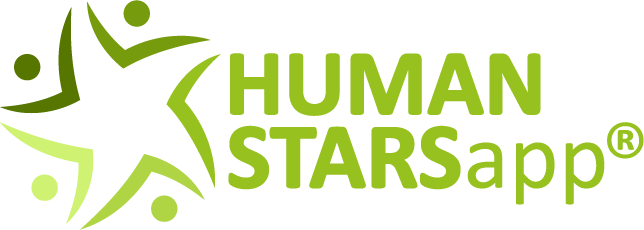Alle Mitarbeiter erreichen? Die gängigsten Formate und Kanäle für interne Kommunikation & Mitarbeiterkommunikation
23.Jul.2024

Alle Mitarbeiter erreichen? Die gängigsten Formate und Kanäle für interne Kommunikation & Mitarbeiterkommunikation
In der heutigen, dynamischen Arbeitswelt ist effektive Kommunikation der Schlüssel zum Erfolg eines jeden Unternehmens. Um sicherzustellen, dass alle Mitarbeiter informiert und engagiert bleiben, ist es unerlässlich, die richtigen Formate und Kanäle für die interne Kommunikation zu nutzen. Bei Humanstars haben wir es uns zur Aufgabe gemacht, Unternehmen dabei zu unterstützen, ihre Kommunikation zu optimieren und sicherzustellen, dass jeder Mitarbeiter erreicht wird.
In diesem Artikel stellen wir die gängigsten Formate und Kanäle für die interne Kommunikation vor und zeigen, wie Sie diese effektiv einsetzen können.
-
E-Mail-Kommunikation
Stärken:
E-Mails sind eines der traditionellsten und weit verbreitetsten Kommunikationsmittel in Unternehmen. Sie eignen sich hervorragend für offizielle Ankündigungen, detaillierte Informationen und Dokumentenversand.
Best Practices:
- Klarheit und Prägnanz: Halten Sie die Nachrichten klar und prägnant, um die Aufmerksamkeit der Mitarbeiter zu erhalten.
- Personalisierung: Verwenden Sie personalisierte Anrede und Inhalte, um Relevanz und Engagement zu erhöhen.
- Regelmäßigkeit: Planen Sie regelmäßige Updates, um die Mitarbeiter stets informiert zu halten.
-
Intranet und Mitarbeiterportale
Stärken:
Ein Intranet oder Mitarbeiterportal bietet eine zentrale Anlaufstelle für alle internen Informationen und Ressourcen. Es ist besonders nützlich für den Zugriff auf Unternehmensdokumente, Richtlinien und wichtige Ankündigungen.
Best Practices:
- Benutzerfreundlichkeit: Sorgen Sie dafür, dass das Intranet einfach zu navigieren und zu bedienen ist.
- Aktualität: Halten Sie die Inhalte stets aktuell, um Relevanz und Vertrauen zu gewährleisten.
- Interaktivität: Fördern Sie die Interaktion durch Foren, Umfragen und Diskussionsplattformen.
-
Mitarbeiter-Apps
Stärken:
Mitarbeiter-Apps bieten die Flexibilität, jederzeit und überall auf Unternehmensinformationen zuzugreifen. Sie sind besonders nützlich für Unternehmen mit dezentralen oder mobilen Belegschaften.
Best Practices:
- Benachrichtigungen: Nutzen Sie Push-Benachrichtigungen, um wichtige Nachrichten sofort zu übermitteln.
- Personalisierung: Ermöglichen Sie personalisierte Inhalte basierend auf Abteilungen oder Standorten.
- Feedback: Integrieren Sie Feedback-Funktionen, um die Kommunikation kontinuierlich zu verbessern.
-
Social Media und interne Netzwerke
Stärken:
Interne soziale Netzwerke fördern die Zusammenarbeit und das Gemeinschaftsgefühl innerhalb des Unternehmens. Sie eignen sich hervorragend für informellen Austausch und das Teilen von Erfolgen und Best Practices.
Best Practices:
- Moderation: Stellen Sie sicher, dass die Plattformen moderiert werden, um einen respektvollen und konstruktiven Austausch zu gewährleisten.
- Engagement: Ermutigen Sie die Mitarbeiter zur Teilnahme durch Wettbewerbe, Umfragen und regelmäßige Updates.
- Kultur: Nutzen Sie soziale Netzwerke, um die Unternehmenskultur zu stärken und gemeinsame Werte zu fördern.
-
Virtuelle Meetings und Webinare
Stärken:
Virtuelle Meetings und Webinare sind ideal für den direkten Austausch und die Vermittlung komplexer Informationen. Sie ermöglichen es, in Echtzeit Fragen zu stellen und Diskussionen zu führen.
Best Practices:
- Vorbereitung: Stellen Sie sicher, dass die Technologie einwandfrei funktioniert und die Teilnehmer gut vorbereitet sind.
- Interaktivität: Integrieren Sie interaktive Elemente wie Umfragen, Q&A-Sessions und Diskussionsrunden.
- Aufzeichnungen: Bieten Sie Aufzeichnungen an, damit Mitarbeiter, die nicht live teilnehmen können, die Inhalte später abrufen können.
-
Printmedien und Aushänge
Stärken:
Trotz der Digitalisierung haben Printmedien und Aushänge nach wie vor ihren Platz in der internen Kommunikation, insbesondere in Produktionsumgebungen oder für Mitarbeiter ohne regelmäßigen Computerzugang.
Best Practices:
- Visuelle Gestaltung: Nutzen Sie ansprechende Grafiken und Layouts, um die Aufmerksamkeit der Mitarbeiter zu gewinnen.
- Strategische Platzierung: Platzieren Sie Aushänge an gut sichtbaren Orten, wie Pausenräumen und Eingangstüren.
- Regelmäßige Updates: Aktualisieren Sie die Inhalte regelmäßig, um Relevanz und Interesse zu bewahren.
-
Videos und Podcasts
Stärken:
Videos und Podcasts bieten eine unterhaltsame und ansprechende Möglichkeit, Informationen zu vermitteln. Sie sind ideal für Schulungen, Unternehmensnachrichten und inspirierende Geschichten.
Best Practices:
- Qualität: Achten Sie auf eine hohe Produktionsqualität, um Professionalität und Glaubwürdigkeit zu gewährleisten.
- Authentizität: Verwenden Sie echte Geschichten und Stimmen aus dem Unternehmen, um Authentizität und Verbindung zu schaffen.
- Verfügbarkeit: Stellen Sie sicher, dass Videos und Podcasts leicht zugänglich sind, z. B. über das Intranet oder die Mitarbeiter-App.
-
Persönliche Kommunikation
Stärken:
Nichts ersetzt die persönliche Kommunikation. Regelmäßige Teammeetings, Mitarbeitergespräche und Firmenveranstaltungen sind unerlässlich, um persönliche Verbindungen zu stärken und Vertrauen aufzubauen.
Best Practices:
- Regelmäßigkeit: Planen Sie regelmäßige Treffen und Gespräche ein, um den Austausch zu fördern.
- Offenheit: Fördern Sie eine offene und transparente Kommunikation, um Vertrauen und Engagement zu stärken.
- Anerkennung: Nutzen Sie persönliche Gespräche, um Anerkennung und Wertschätzung auszudrücken.
Fazit
Die Wahl der richtigen Kommunikationskanäle und -formate ist entscheidend, um alle Mitarbeiter effektiv zu erreichen und zu informieren. Bei Humanstars bieten wir maßgeschneiderte Lösungen, die den individuellen Bedürfnissen Ihres Unternehmens entsprechen und die interne Kommunikation auf ein neues Niveau heben. Entdecken Sie, wie unsere Technologien und Plattformen Ihre Kommunikationsstrategien unterstützen können, um den Zusammenhalt und das Engagement Ihrer Mitarbeiter zu fördern.
Erfahren Sie mehr über unsere Angebote und wie wir Ihnen helfen können, Ihre interne Kommunikation zu optimieren. Melden Sich gerne über das Kontaktformular.



